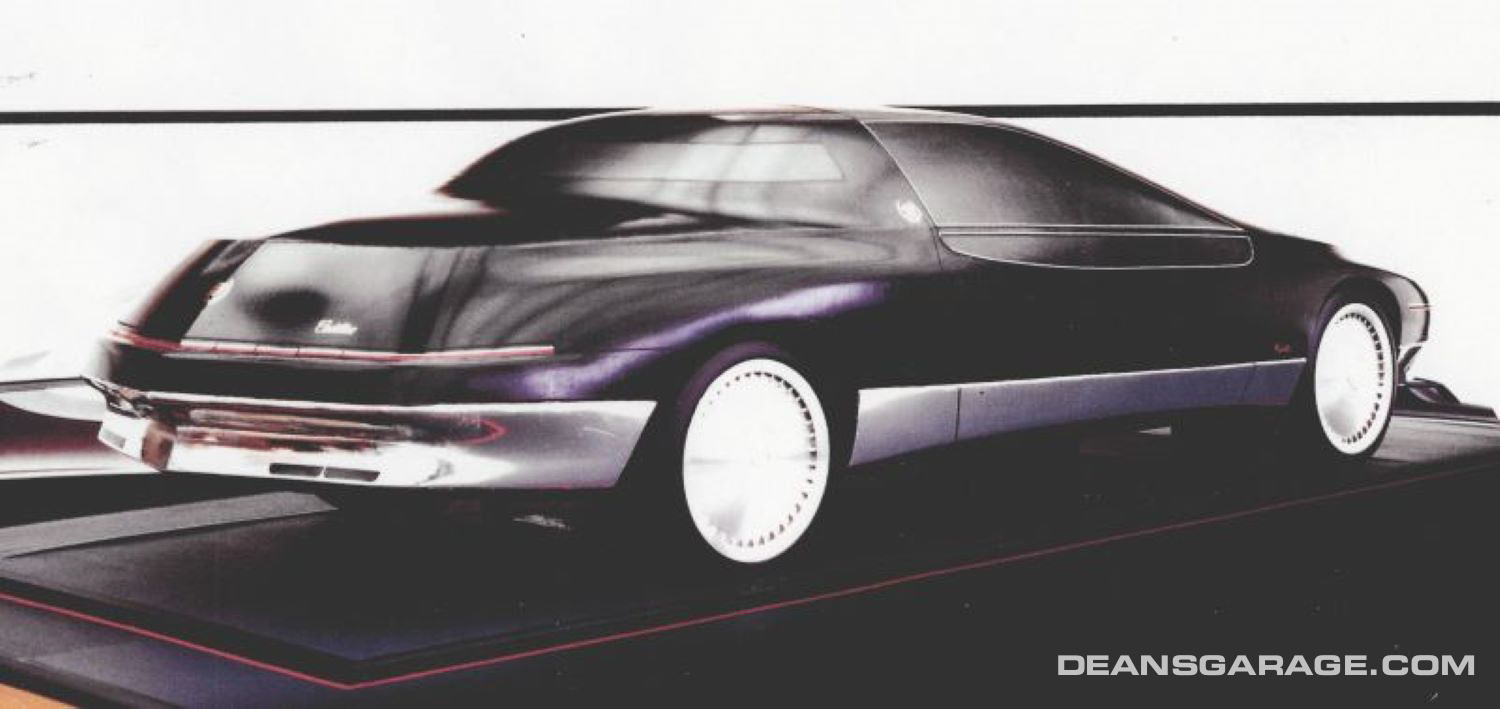
How the Cadillac 1989 Solitaire Concept Show Car evolved
by Bruce Brooks
In late 1987, with the clay modeling completed on the Voyage, I had transferred to Advanced Design Studio No.3 to replace Mike W. Costello who had retired. Mike was the assistant to chief clay modeler Fred Hauschild. In early 1988 Fred retired and I was promoted to chief clay modeler to replace him.
With the success of the four door V8 Voyage, Cadillac decided that for the 1989 show car circuit they would have Advanced Design Studio No.4 do a two door V12 version. The V12 engine was a joint development between Cadillac and Lotus. That became the Cadillac Solitaire concept show car project for the studio with the design credit going to our chief designer Allen Young with some lineage derived from the Voyage, like the articulated hinged front wheel skirt. That provided the tire clearance when turning. Neither Jerry Brochstein or Allen Young originally used or wanted the front wheel skirt design in their early 3/8 scale model designs. Chuck Jordan made the executive decision to use that theme. He wanted to have an uninterrupted long low limo body character line to flow from bumper to bumper. Those changes were later added to the scale models as well as adapted to the first design direction of the full size clay models.
Don Brougham had been transferred to Cadillac Exterior Design Studio to replace their chief modeler, Ray Hildebrandt, who had retired. I was transferred from Advanced Design Studio No.3 back to Advanced Design Studio No.4 to be the chief clay modeler to take Don’s place. The rest of the studio clay modeling crew remained the same as all of those that had worked on the Voyage. This time we had a longer lead time for completion, and with final surface approval at GM Design, we again shipped the clay armature to Triad fabrication for them to complete a fiberglass running prototype show car. The debut show for the Solitaire was at the North American International Auto Show, January 7, 1989 in Detroit. This time Cathy Wagner and Rohan Saparamadu did their own interior design with that work done at GM Design before it was sent to Triad for final build there. Our studio Chief Engineer was Tom Lauer and the Technical Stylists were Tish Mastro and Cynthia Matusik.
At Triad Bill Rohlfing was the program manager for both of these show cars. He was a Triad employee, contracted by Cadillac to not only build the cars but he was responsible for all the logistics and care of these vehicles worldwide. He went everywhere they were shown. He coordinated any and all repairs. He coordinated the handling in and out of buildings, transport trucks and overseas air freight. He traveled to shows from Detroit to Chicago, New York, Los Angeles, Miami, Paris, Geneva, Turin and others. When the vehicles were on display he was there as the guy representing Cadillac, answering questions at the press reviews, and he was also on the floor during the shows.
Both the of the Cadillac Voyage and Solitaire show cars are presently kept at the GM Heritage Center in Sterling Heights, Michigan (which will be relocating to Grand Blanc, Michigan in the near future). The plan is to move into the GM Customer Care and After Sales Headquarters (which is being relocated). That new location will be renovated to accommodate a much larger vehicle display area.
I would like to give a thank you to those that have contributed information and photos for this effort. They are: Jerry Brochstein, Allen Young, Bill Rohlfing, Dick Ruzzin, Jim Bieck, John Shettler, Jerry Palmer, and the archivists Christo Datini and Kathy Adelson in the GM Design Archives and Special Collections group.

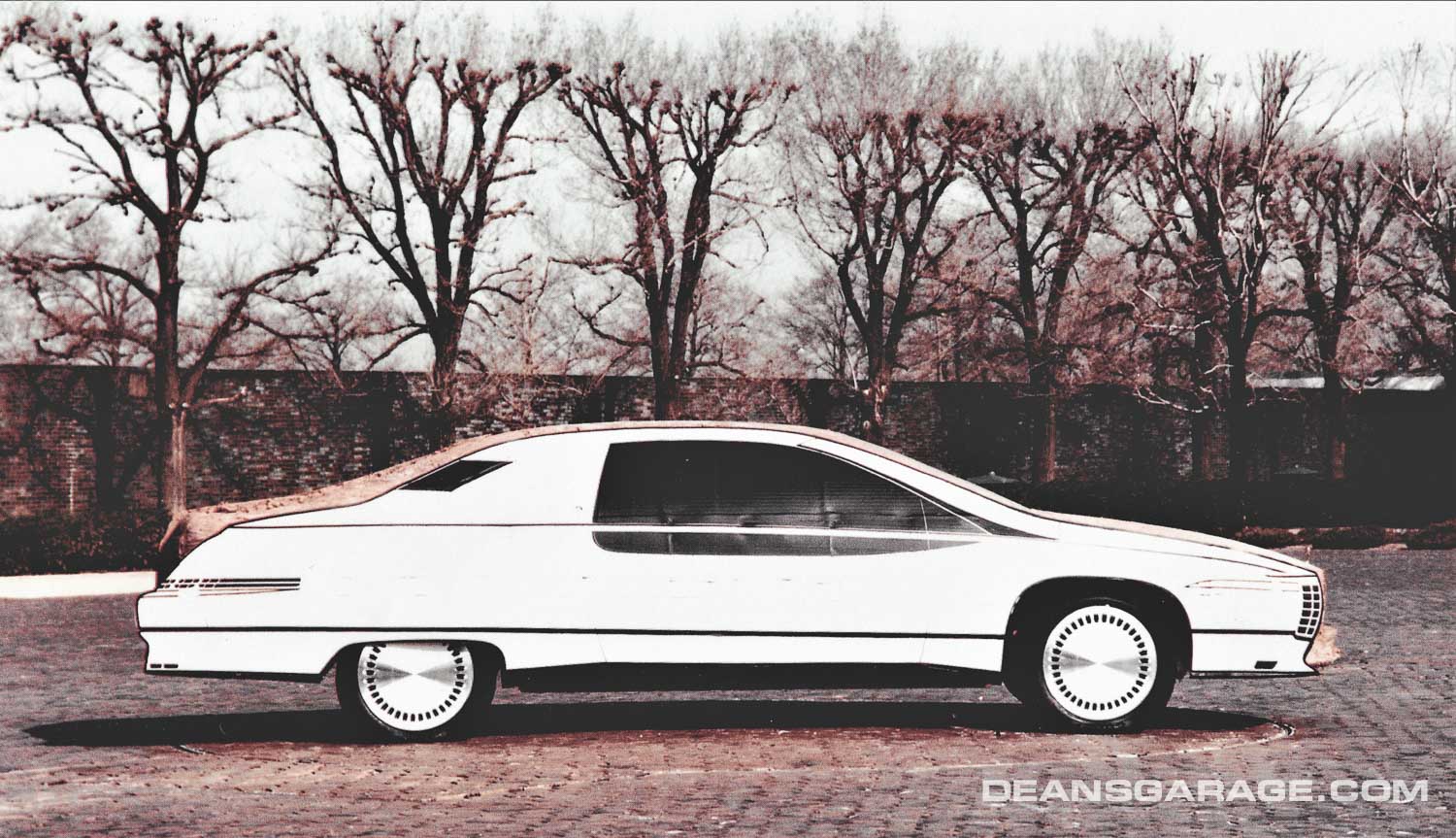
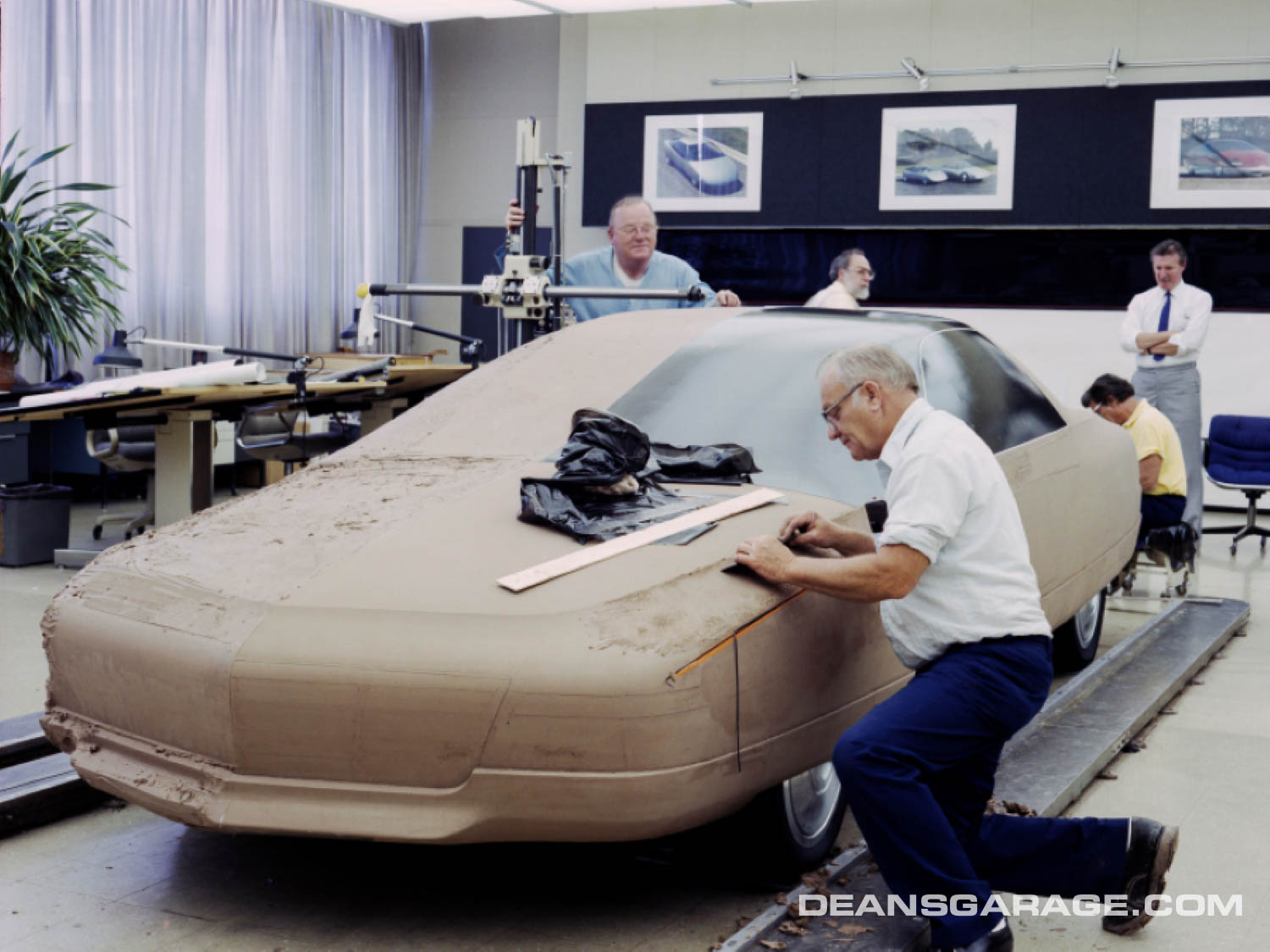
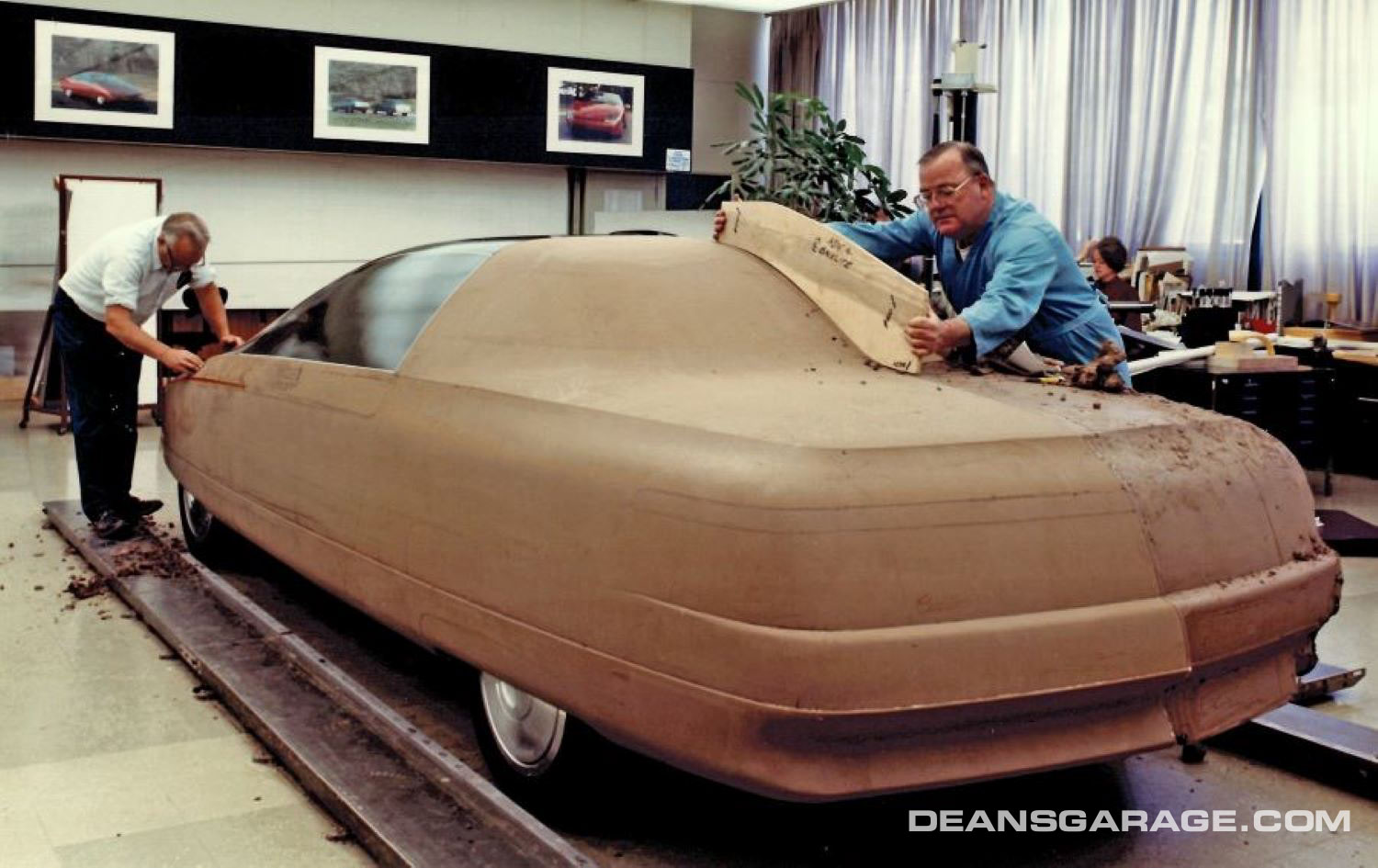
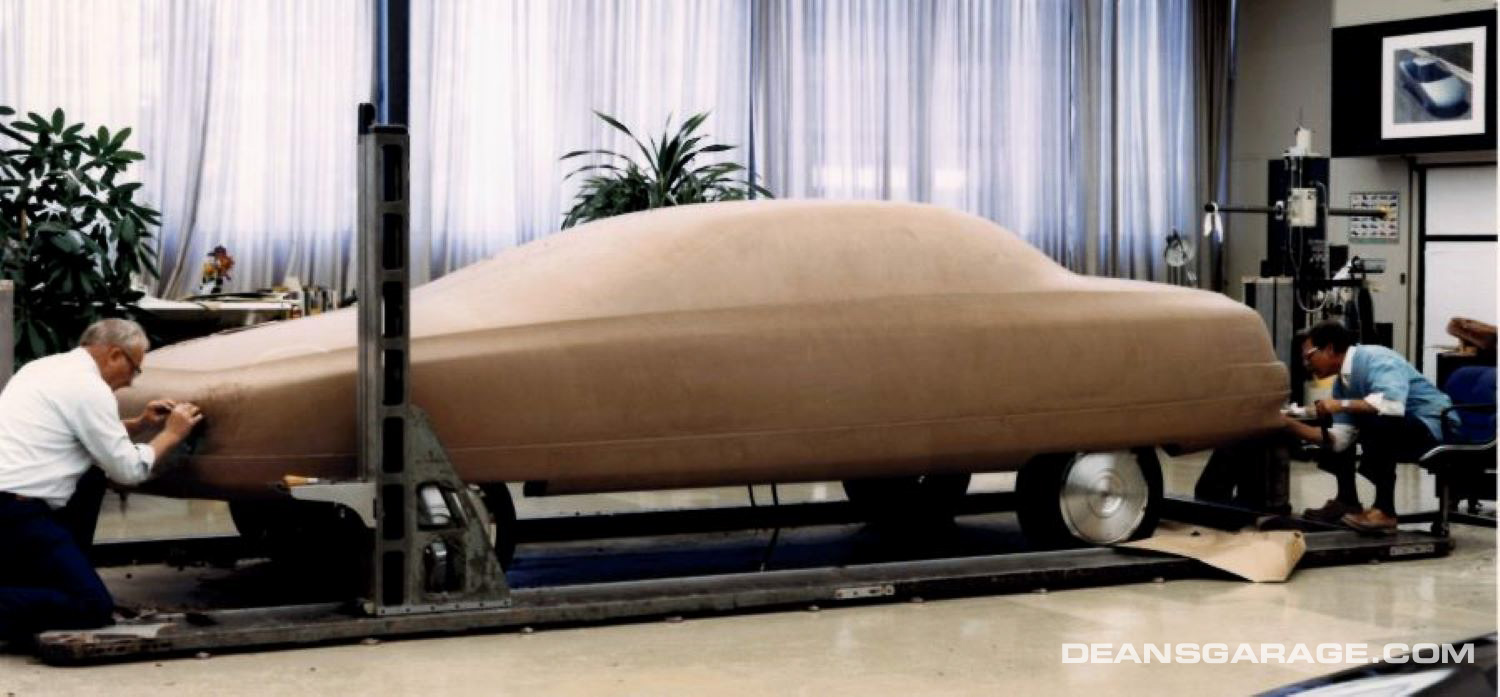
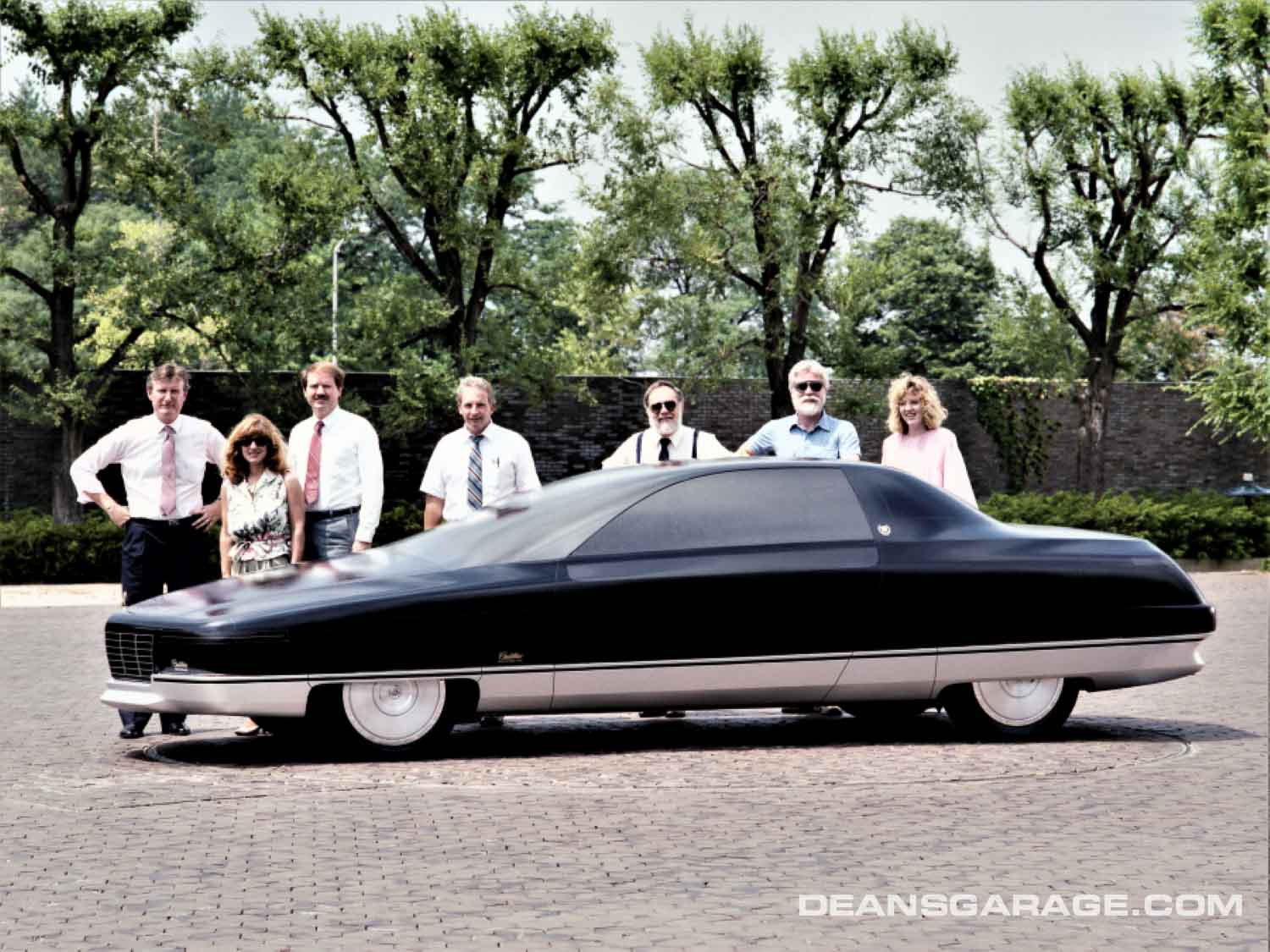
1. Full-size airbrush rendering.
2. Paper mock-up on clay model on the patio.
3. First studio photo: Ivan Koop front fender, Bob Greening on PDQ point taker, Frank DeDona rear fender, Jerry Brochstein left rear, Allen Young right rear
4. Second studio photo: Ivan Koop front fender, Bob Greening back light, Cathy Wagner behind Bob
5. Third studio photo: Ivan Koop front fender, Frank DeDona rear quarter
6. Forth studio photo, left to right: Allen Young, Patrica Mastroianni (AKA) Tish Mastro, Bruce Brooks, Tom Lauer, Jerry Brochstein, Bill Dineen, Cynthia Matusik
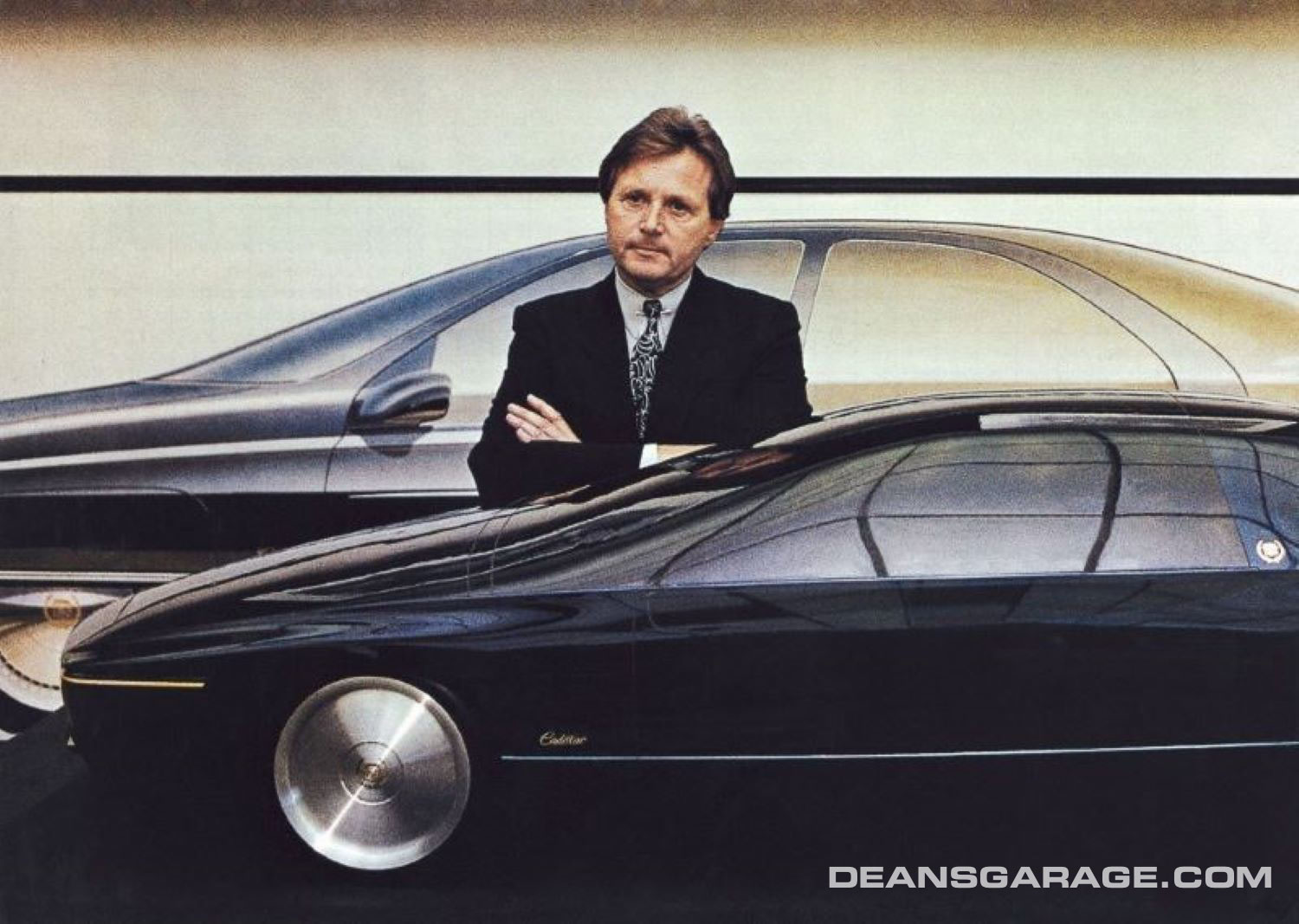
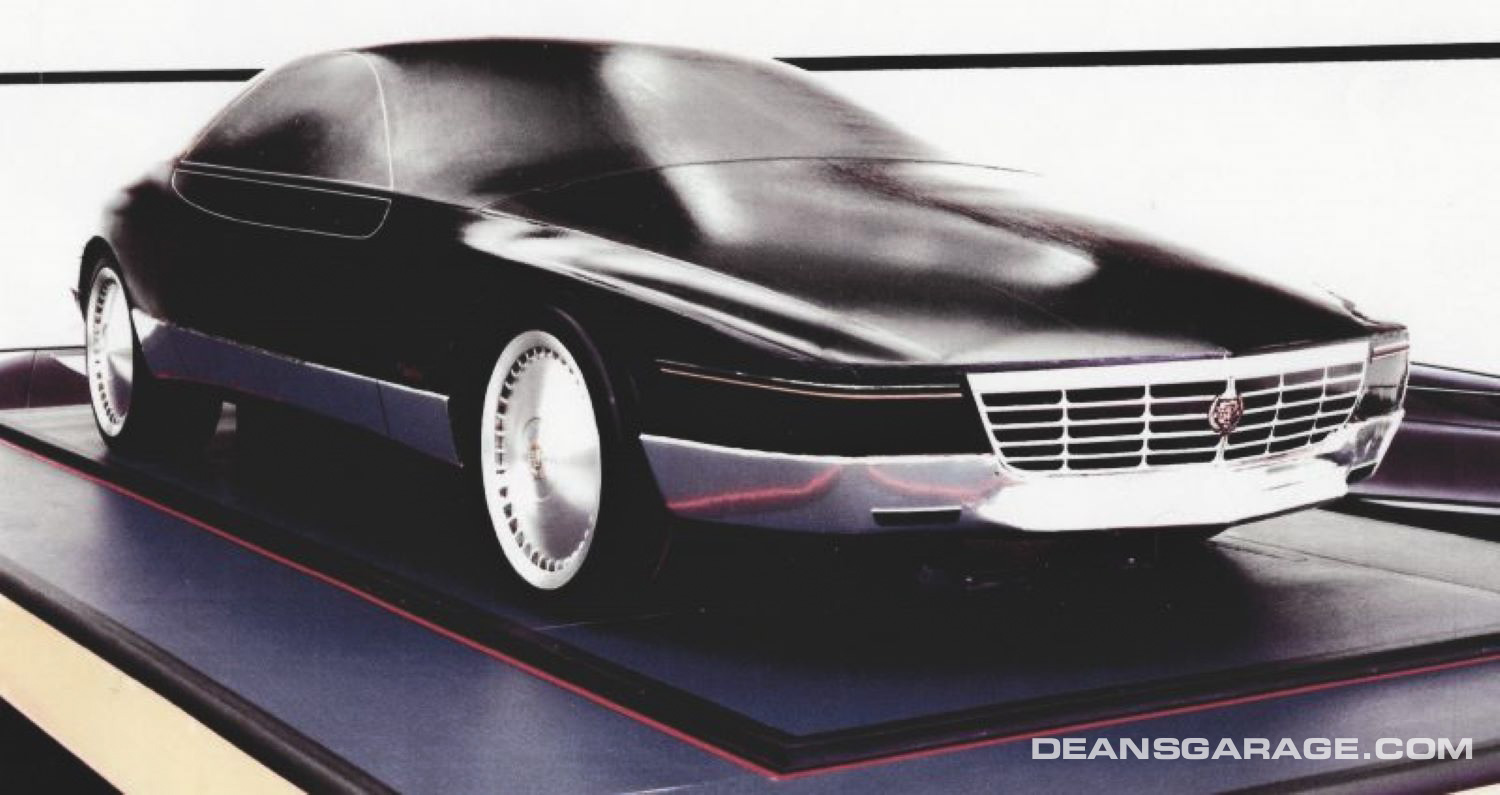

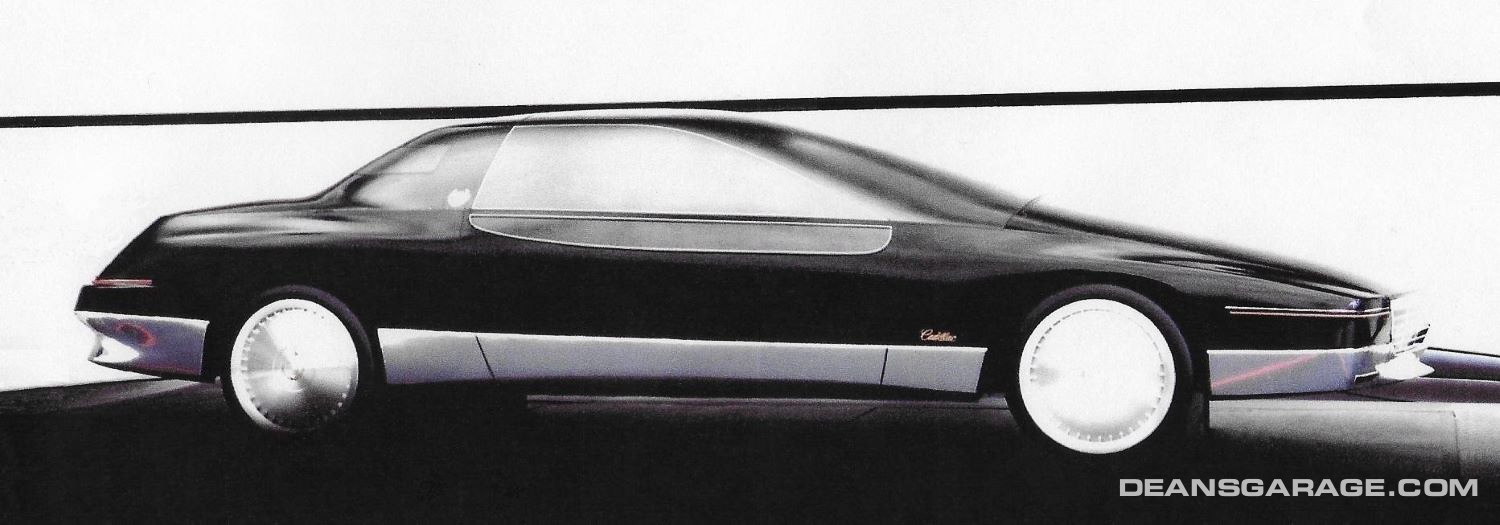
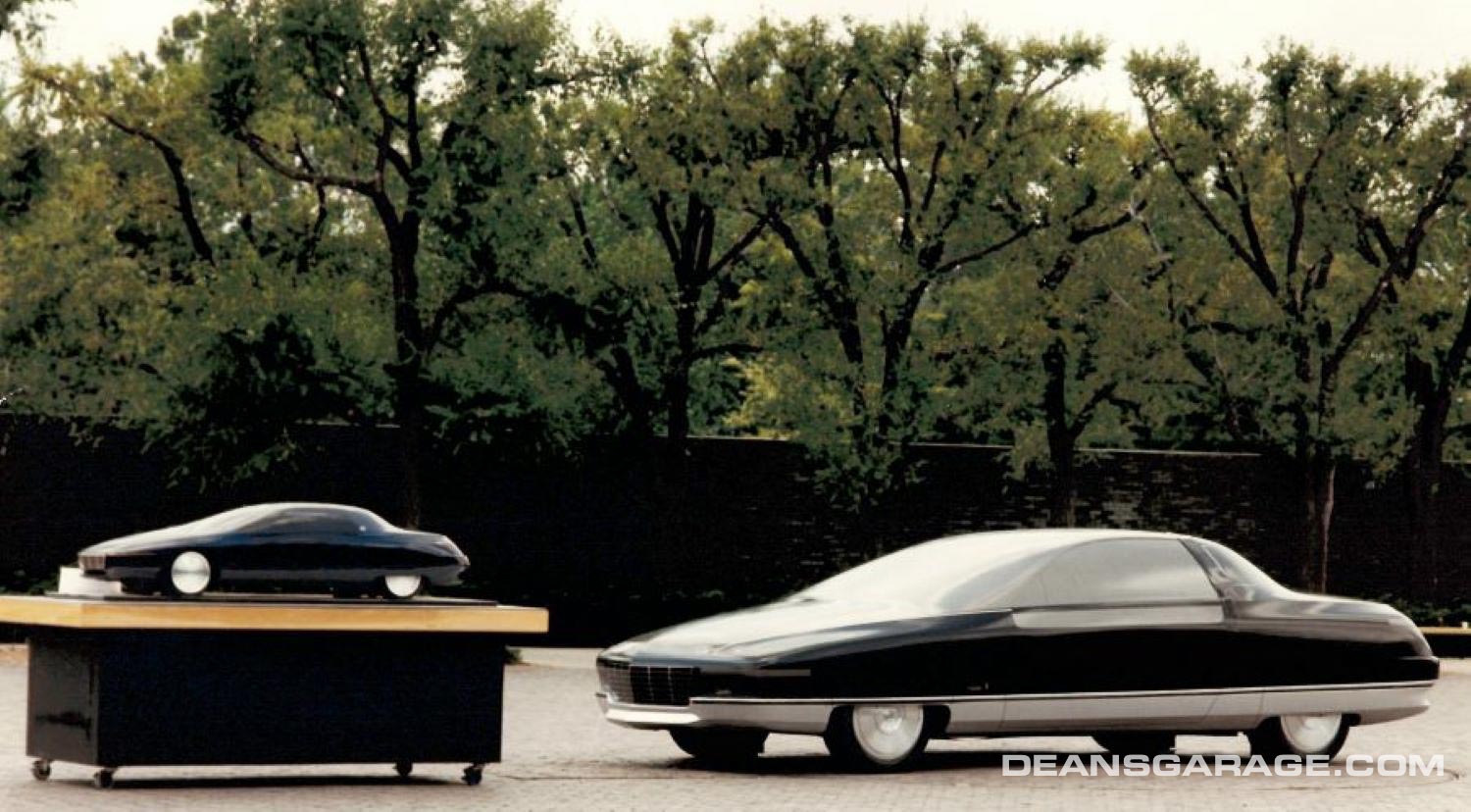
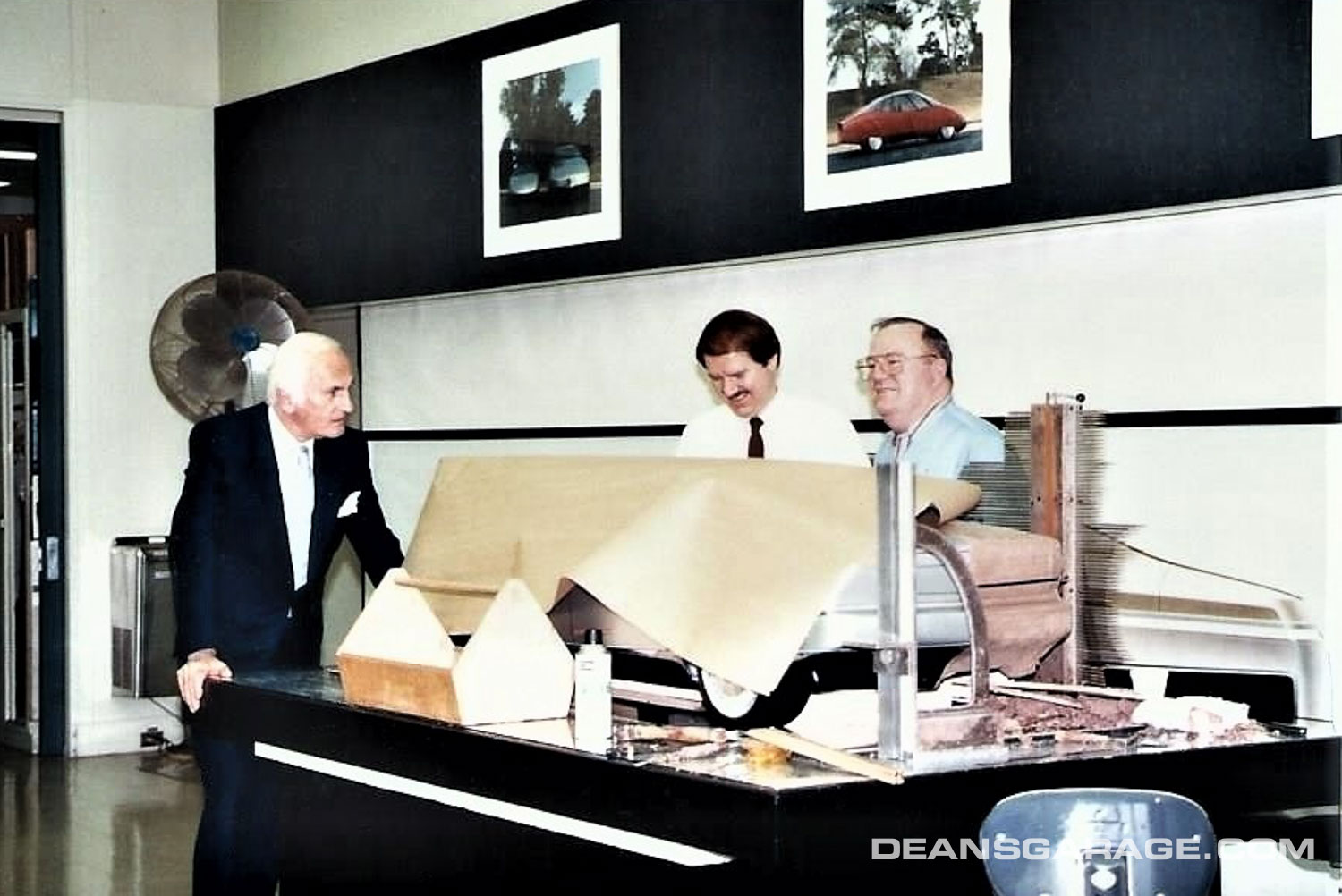
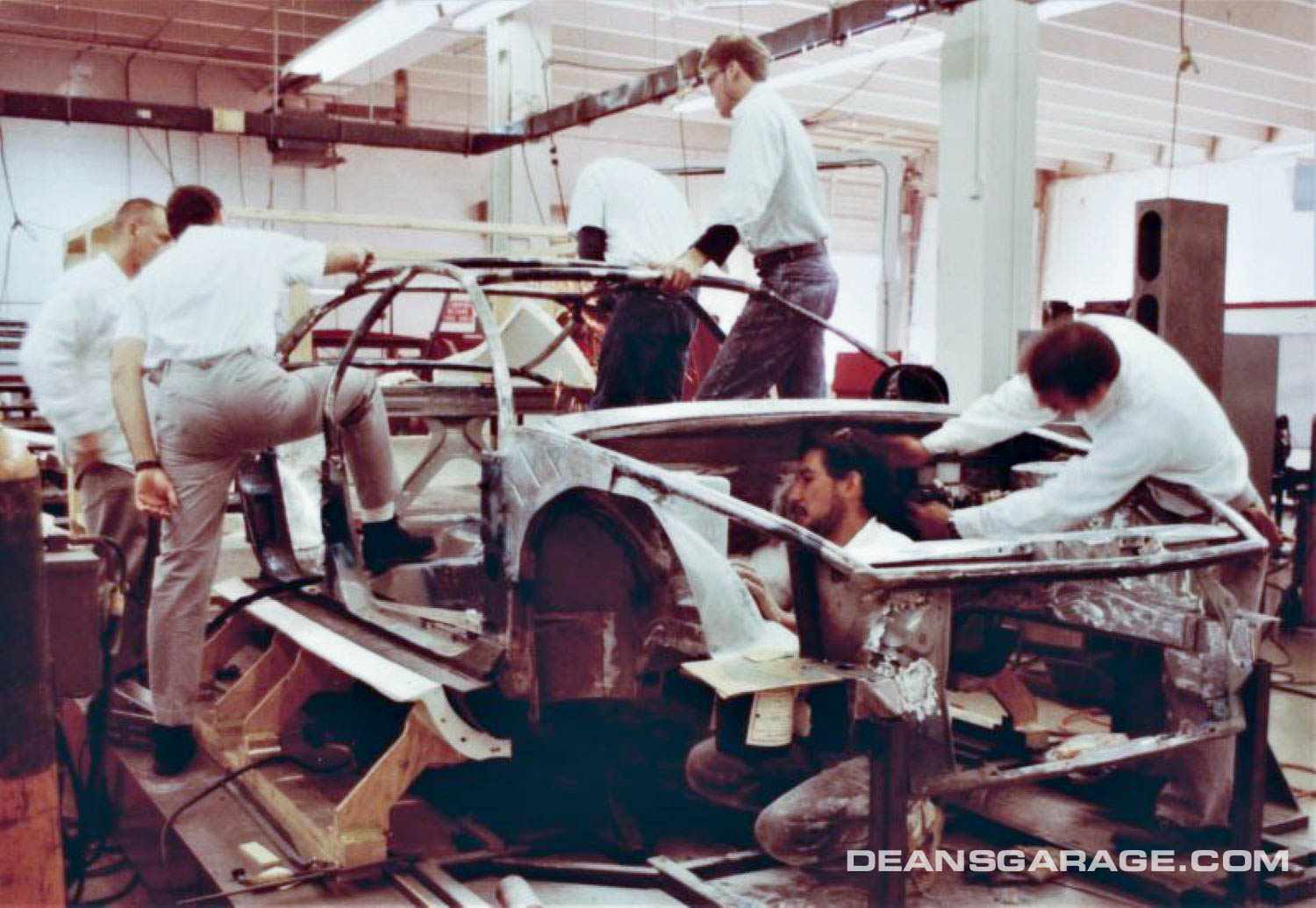
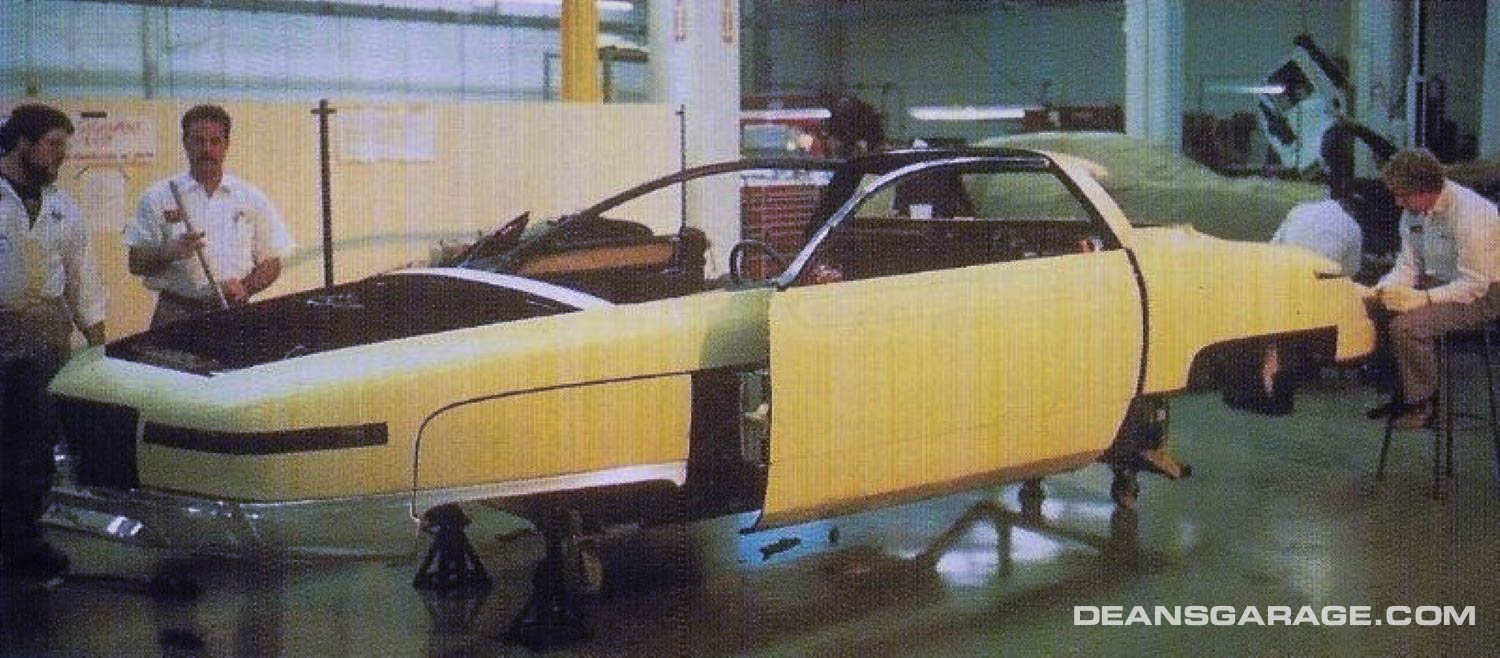
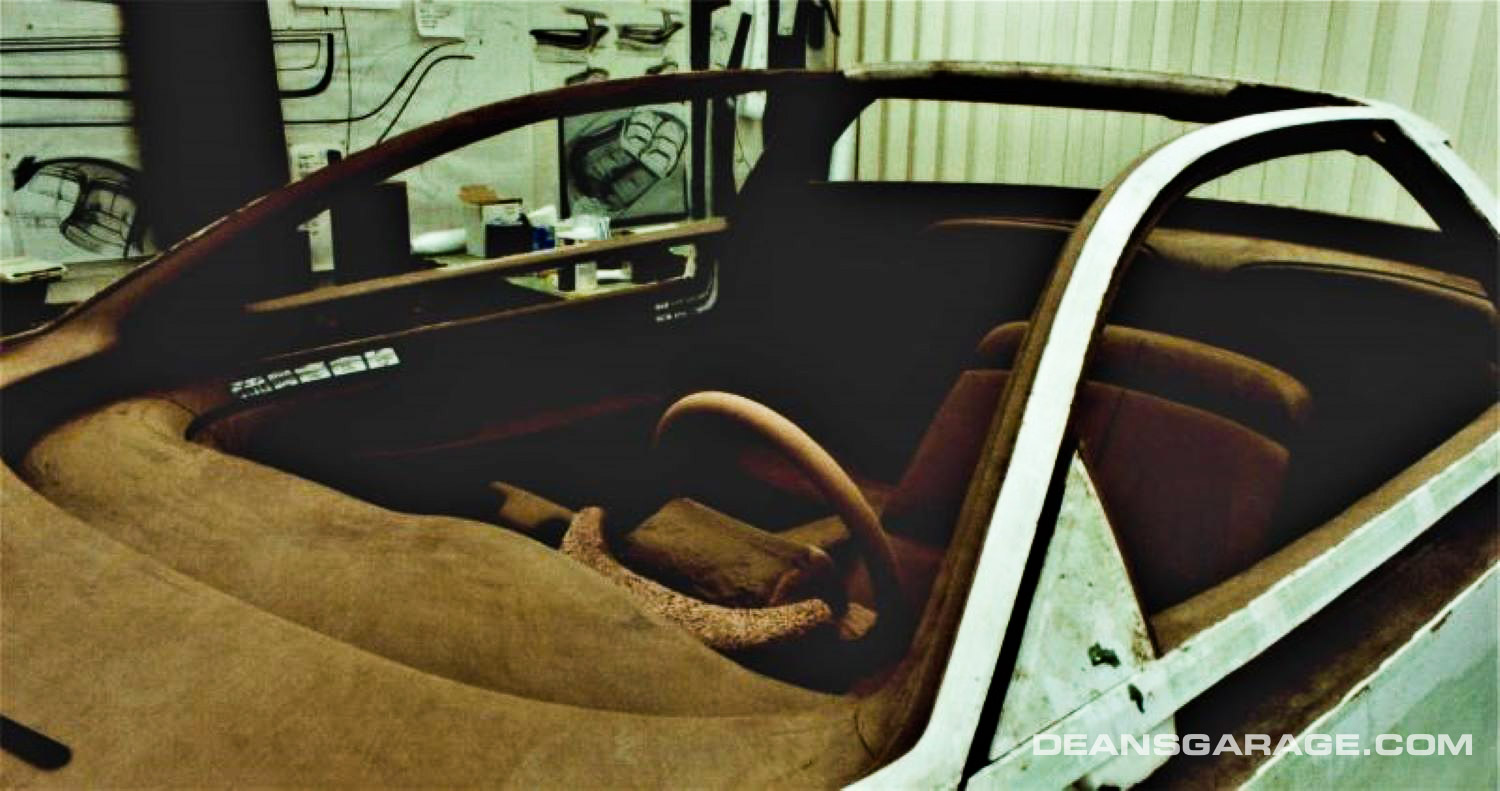
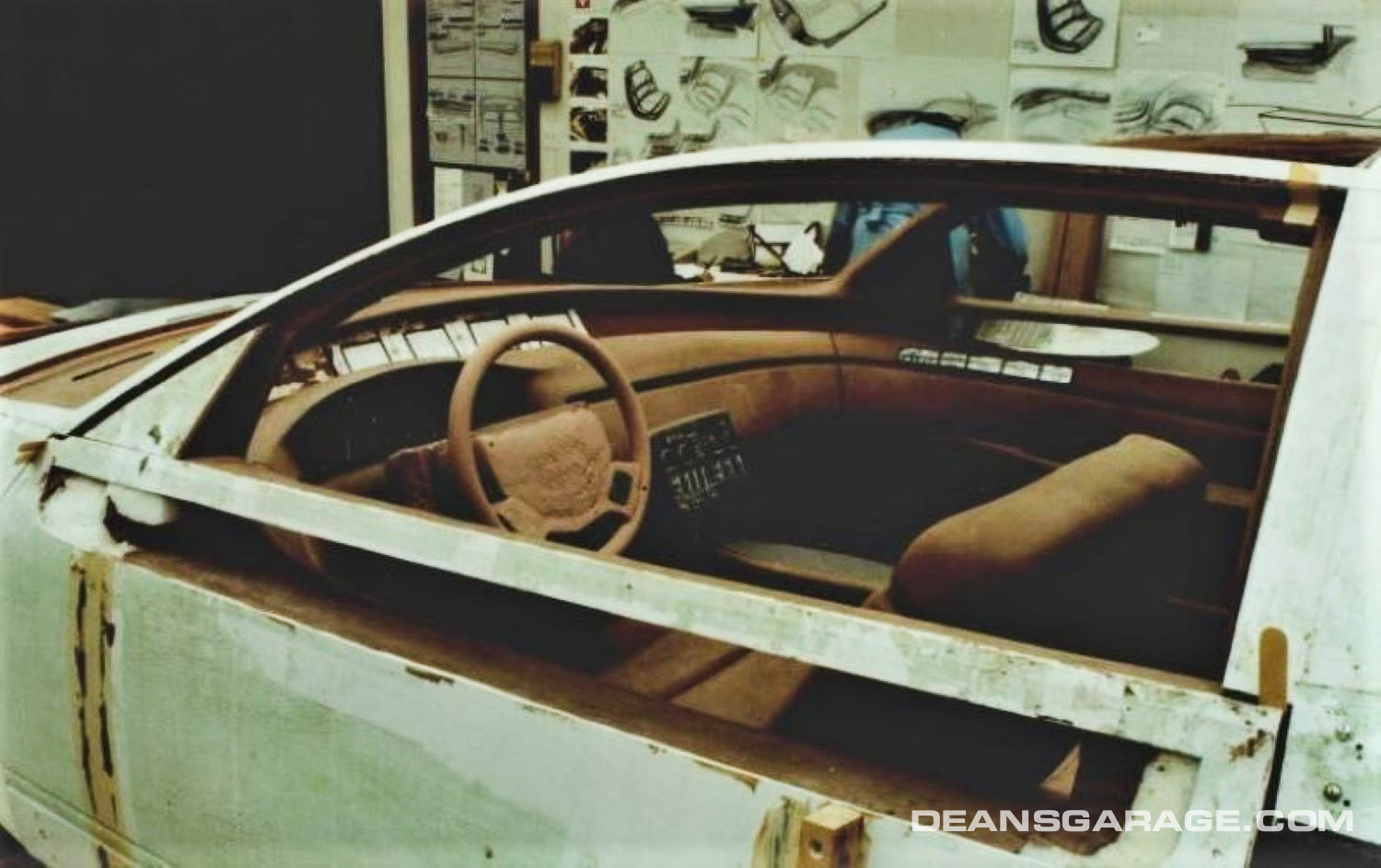
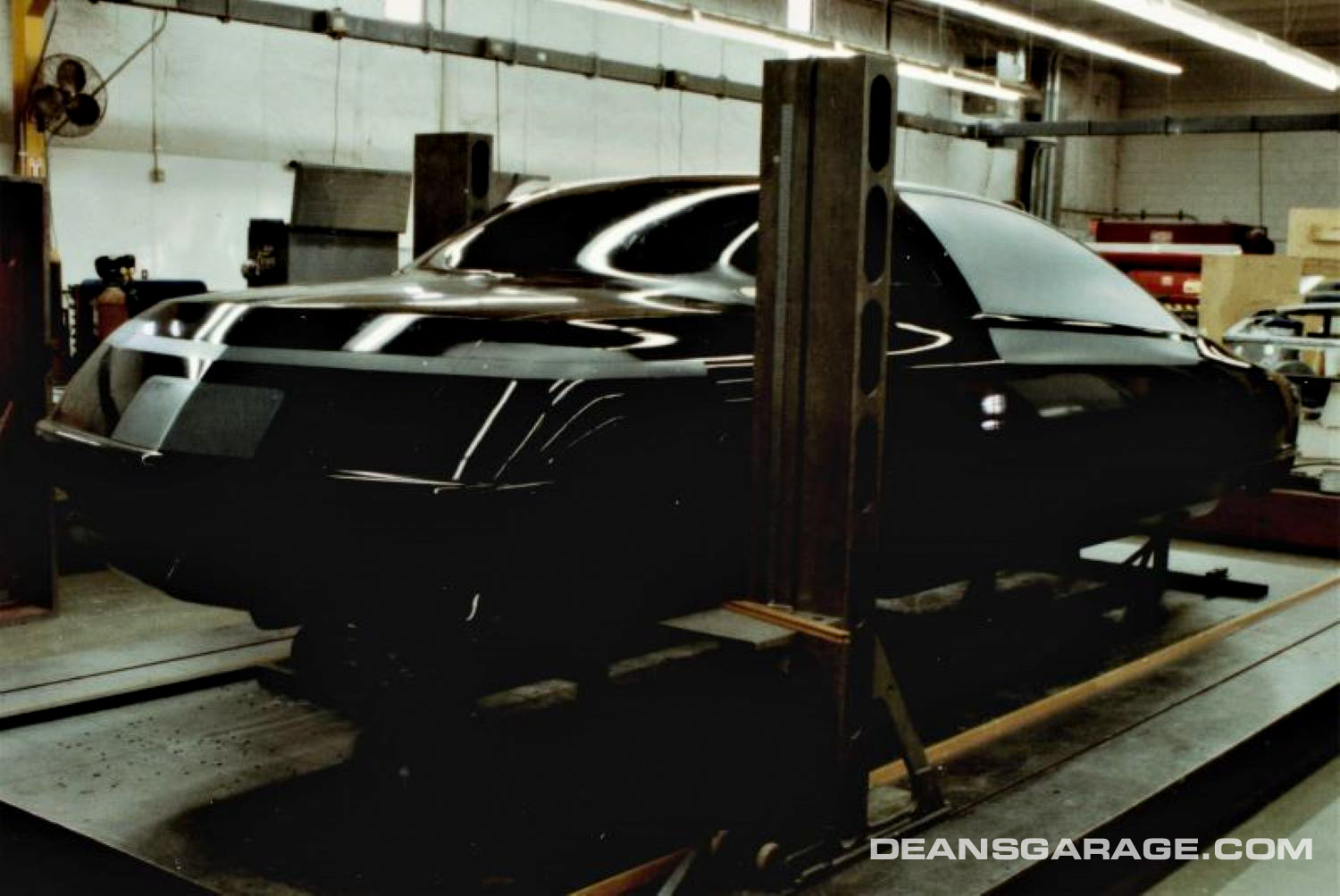
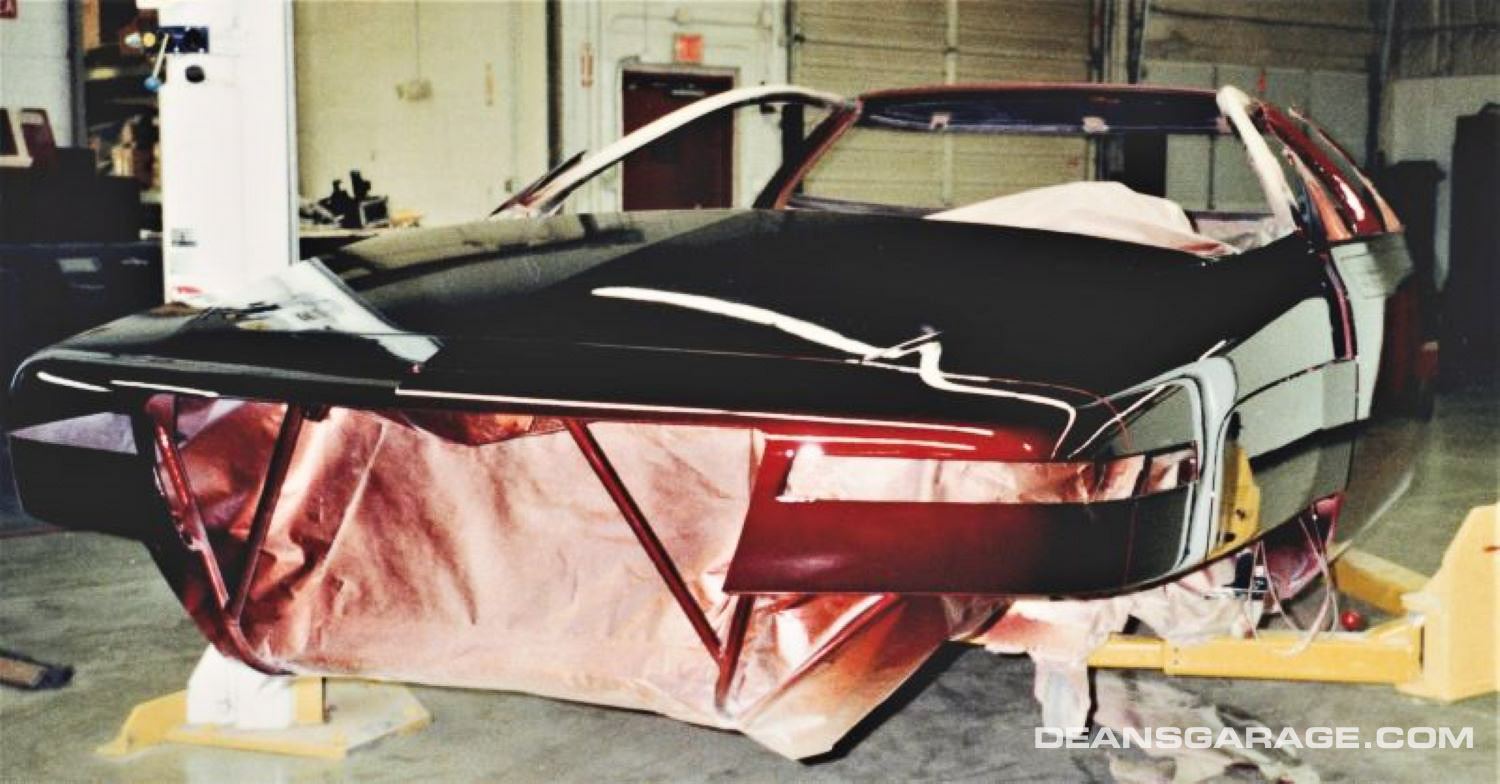

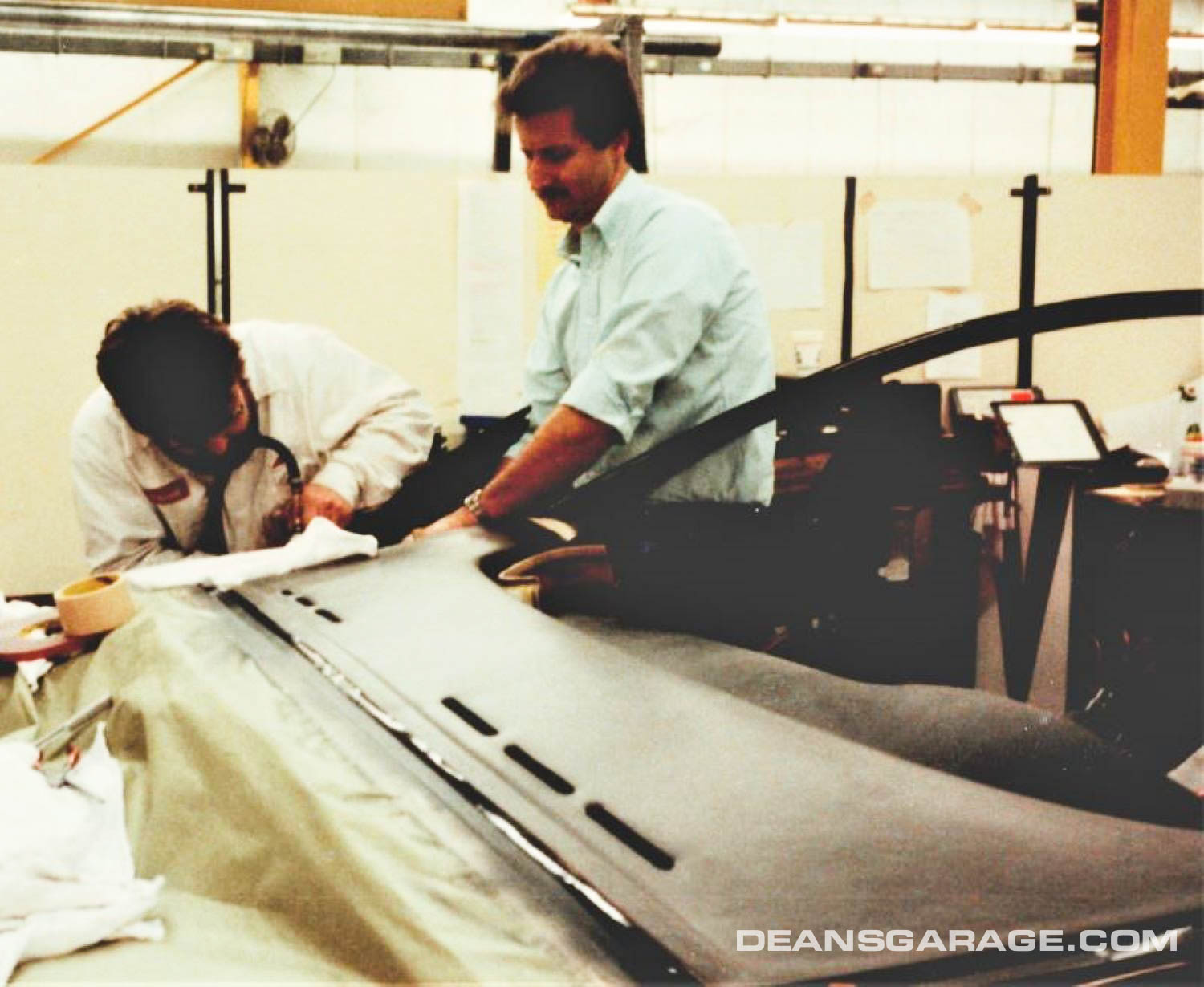
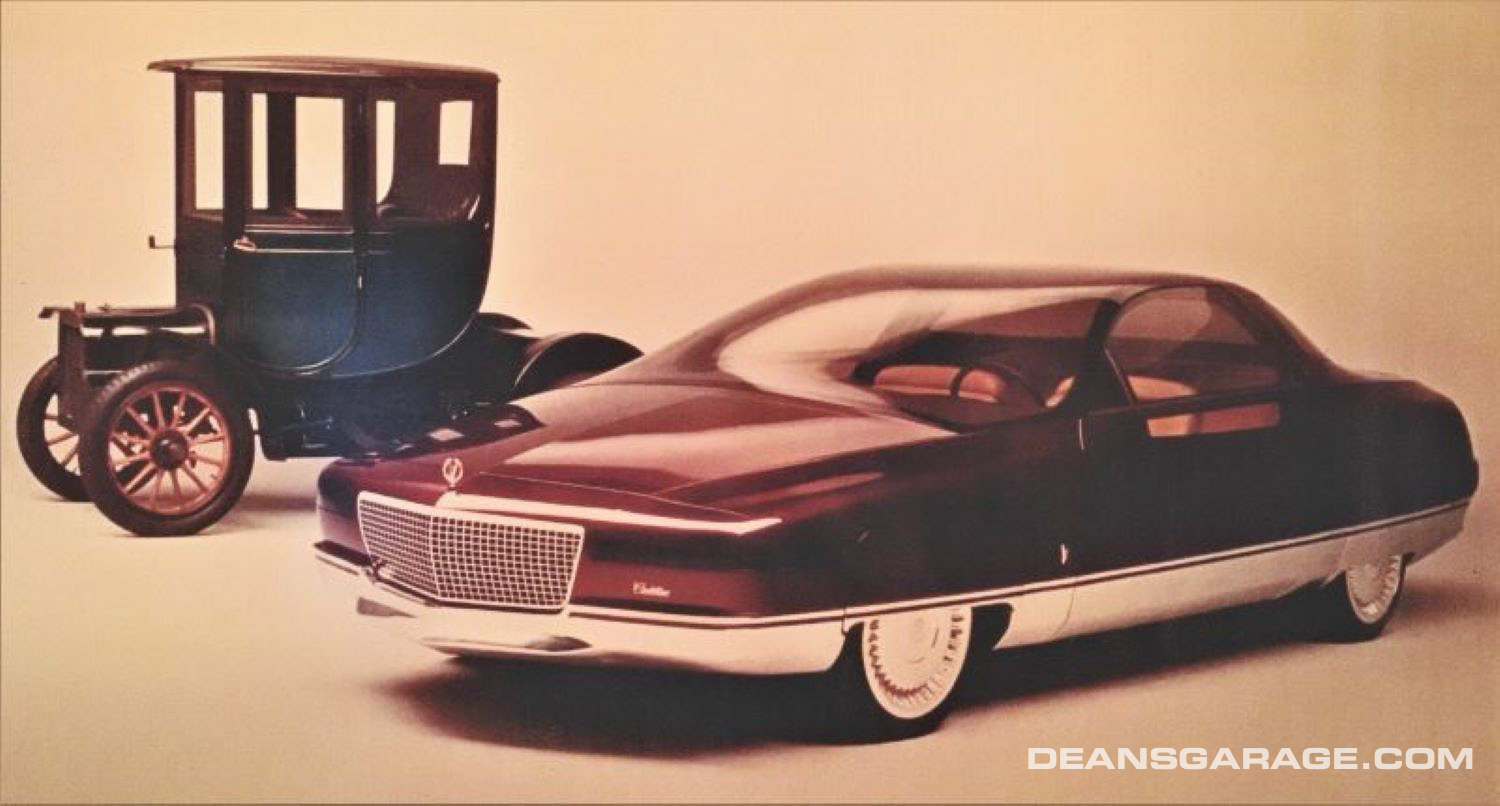
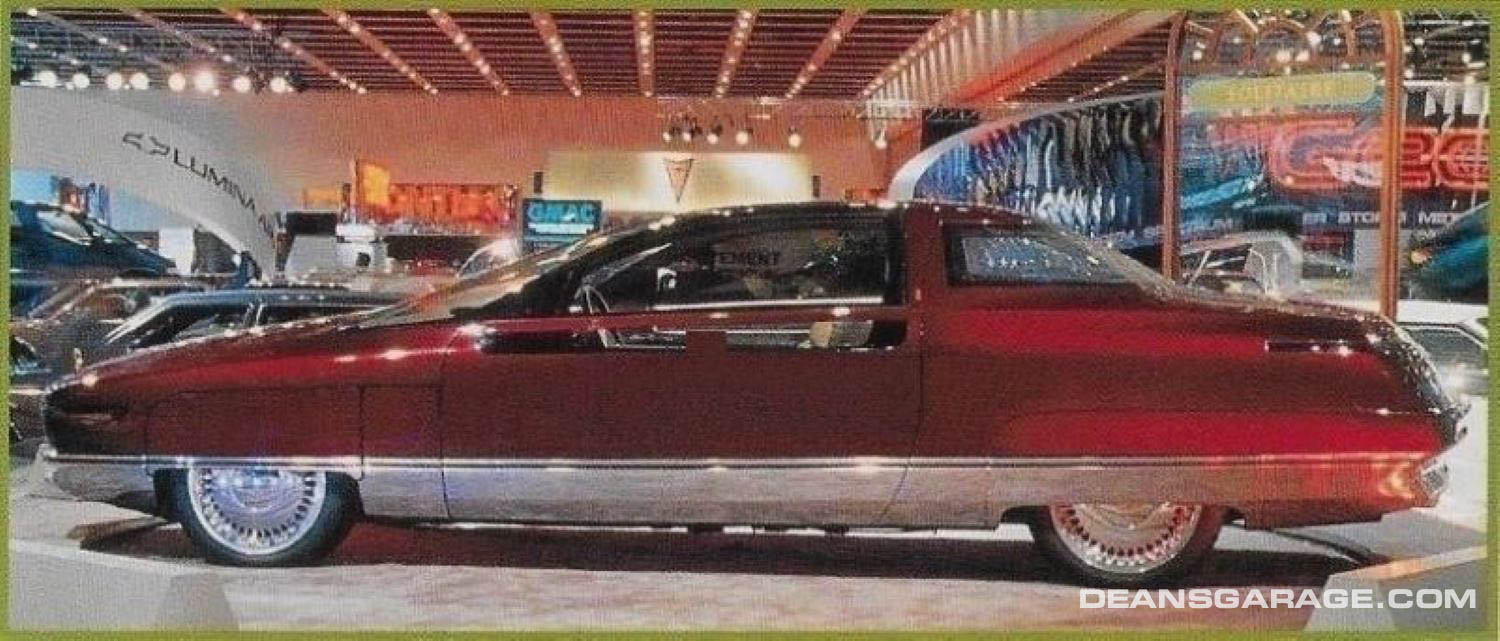
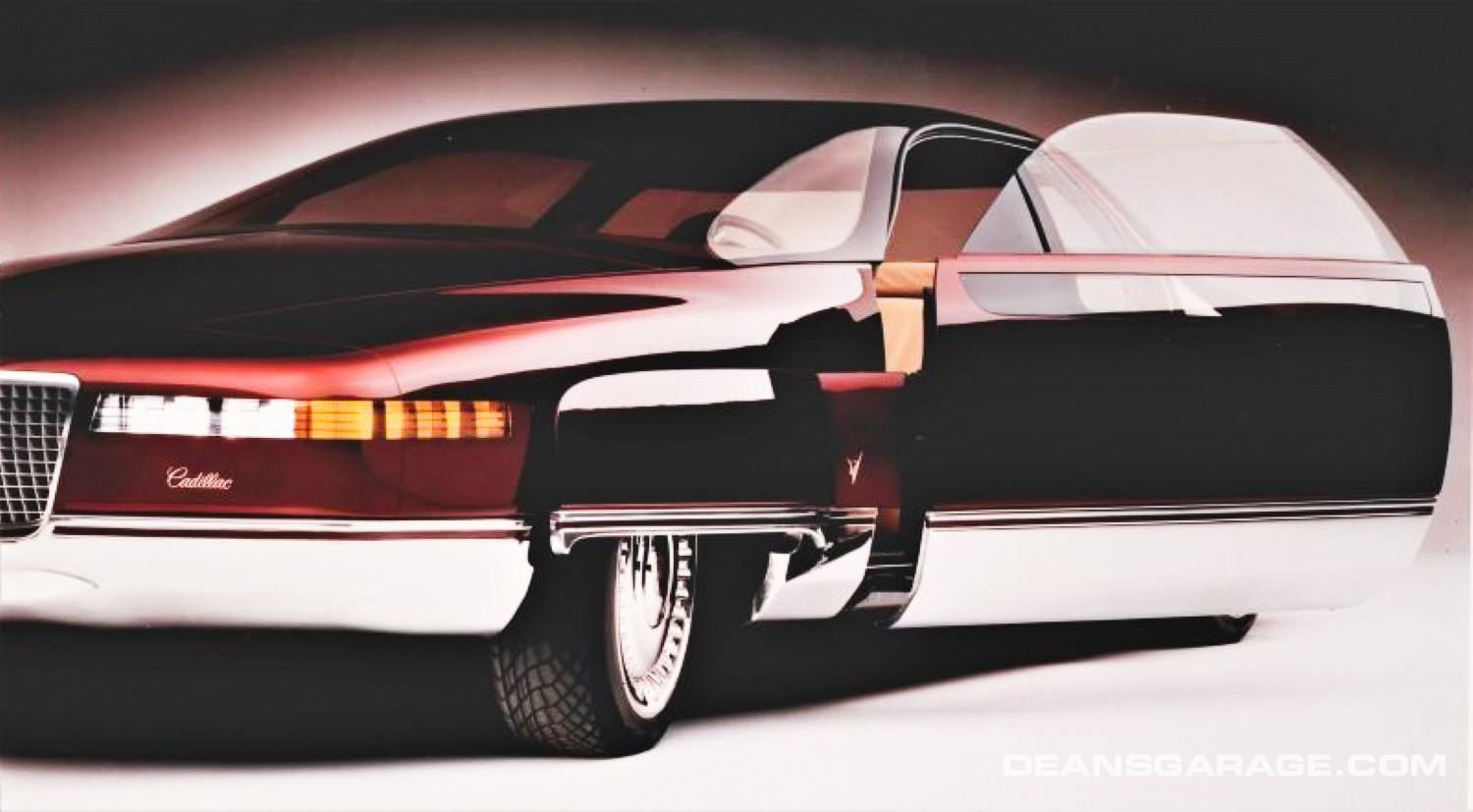

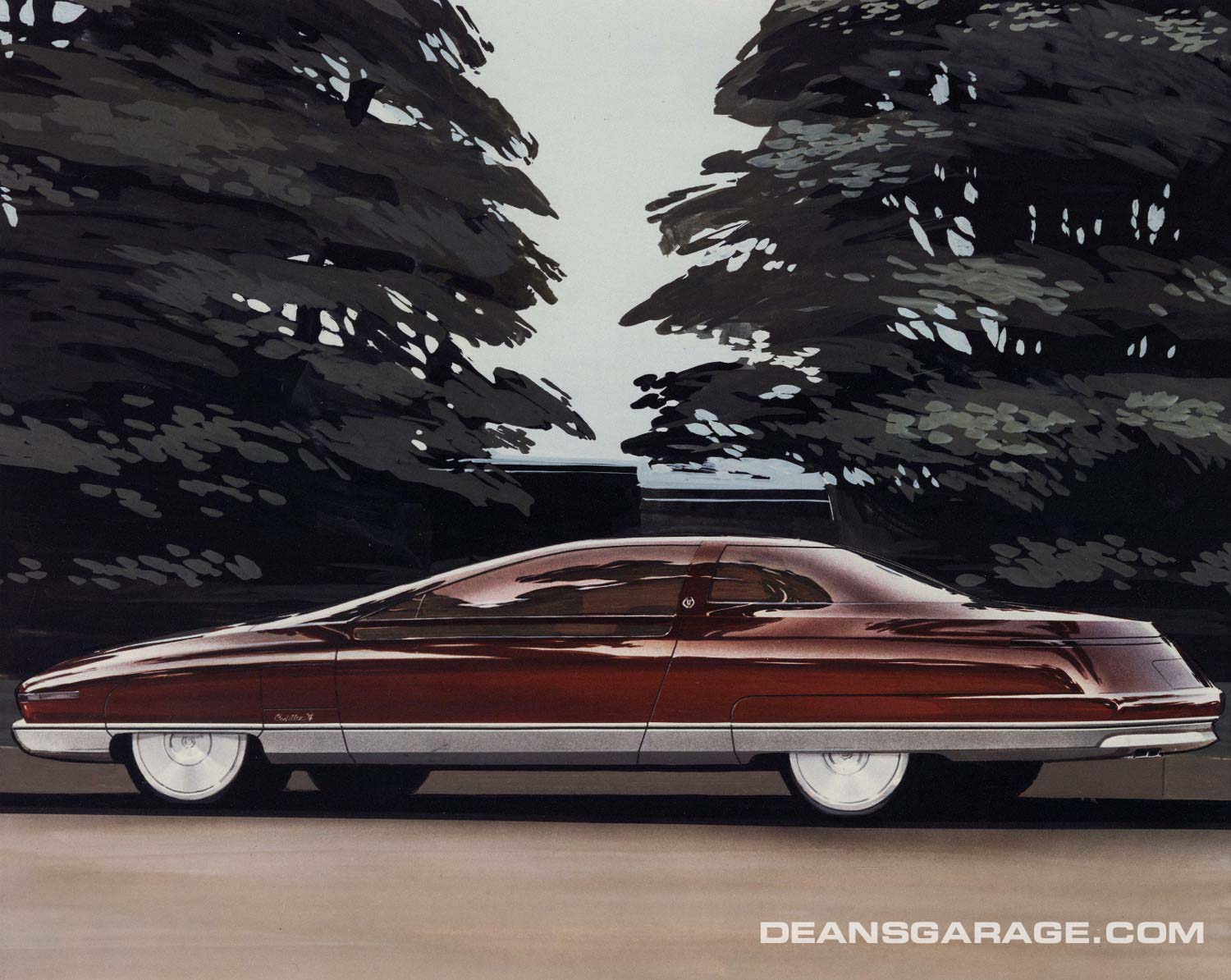

Superb story and images . My favourite era of GM Styling – thank you !
Thank you for the wonderful development stories on both the 1988 Cadillac Voyage and 1989
Cadillac Solitaire. I would see both of these concepts as a budding teenage car enthusiast at the Philadelphia Auto Show in 1990 & 1991 I believe. Both beautiful cars and left a great impression on me. Fantastic seeing these in motion and the spotlight in the 1993 movie, “Demolition Man,” where the Solitaire had a starring role as the the secondary villain’s mode of transportation.
I remember all of these folks.
This was an interesting time at GM and certainly well worth remembering… These were fantastic designs.
I write this in the context of growing up in a G.M. family and always in awe of Cadillac’s dominance in its market segment (overlooking the Cimarron), but I wonder why Cadillac did not tool up a production version of these cars at a time when Lincoln was going all-out to match Cadillac. While I loved the 1992 Eldorado and STS, Cadillac needed something to erase the unfortunate truncated austere styling cars of 1985. While the ghost of Frederic G. Donner probably approved, Cadillac needed cars that fired the imagination and the Allante was not it !
The unspoken edict from Above: “Upper management has decreed traditional Cadillac styling today is culturally embarrassing. Your job is to remove every trace of that.” In reality, they needn’t have worried: these kids had never seen a Cadillac older than 1973.
Fabulous two part story, thank you. The amount of people involved in such schemes will never fail to amaze and impress.
Do characters such as Bill Rohlfing still exist? The level of responsibility he had would surely take a team a team of twenty or more, these days. The very thought of all that trial alone makes my head spin.
And I’ll have to re-check out Demolition man to see the car in question. It’s many years since I watched that movie
Too bad those wheel skirts were added, the car looks so much better without.
I travelled with both the Voyage and the Solitaire as the Cadillac spokesperson. I showcased the concept cars all over the country and generated a lot of excitement! See the Philadelphia Auto Show link below: Bill Rohlfing gave me valuable insight into these beautiful cars before I toured with them. Visiting Triad and meeting with Bill was an experience I will always treasure. https://youtu.be/lGddk15tPRI?feature=shared https://youtu.be/aGtzSCf8zcQ?feature=shared
The “spectacular rendering”, indeed by Andy Hanzel.
Unmatched talent, humor, and physique.
Great times in Buick 1.
The Alante is mentioned in the article above, so I cannot pass on the opportunity to discuss it. Unfortunately, it did not look like a Cadillac and that was it’s major problem.
While the design of the two show cars was going on, Cadillac Studio worked overtime without stopping for 2 1/2 years to create the 1992 Seville and Eldorado.The Alante was the first step by Cadillac Division to establish a new design source for the company. They would need a design source outside the Corporation because Cadillac could not meet the fuel economy mandates as dictated at that point in time by the US government. Cadillac was dragging the entire Corporation down and had to be cut loose. Consequently Cadillac was preparing for that day. The second step in the plan was for PininFarina to design the 1992 El Dorado. We had several clinics, the Cadillac studio El Dorado in competition with the Eldorado from PininFarina. We were not allowed to put body side protective moldings on our models and consequently, we lost every single time. Cadillac Division had rigged the contest. Finally, we figured it out with the help of the people putting on the Clinics. We had started to release the PininFarina car when another clinic was held in Chicago and the PininFarina car was given a very bad review. Chuck Jordan asked us to do one more Eldorado and we did. The Cadillac designers mocked up three designs in a vacant room on the first floor in three days and from those three we put together the final design. The design that you saw on the street was conceived, refined, release for production and sent to the shops to be cast, for a fiberglass model, in eleven days. it was only seen outside for review one time. It received rave reviews in the next Corporate product clinic, the best in GM history. That Eldorado was produced for 12 years, and after 12 years there were still plenty of orders to keep it going, but the Pole Town Plant had a new assignment, so it was finally stopped.
We worked 24 hours a day for three days to achieve the release, dividing the studio in half and bringing support people in from other studios.
Although Cadillac engineering proposed longer cars, to replace the smaller ones that were so disappointing, we proposed that they be even longer. The result was improved aerodynamics. Both the 92 El dorado and Seville were highly sophisticated aerodynamic cars. They bested the previous smaller shorter Cadillacs by 4 miles per gallon in spite of being longer and heavier. The aerodynamic story of the Seville and El Dorado is one that nobody paid attention to as only three people in the building knew that Cadillac was going to be put out of business unless the new cars would be considered outstanding by the Board of Directors. Cadillac engineering was on the hook also to create internationally competitive ride, handling and performance for both. Finding the design for those two cars was seen as such an incredible and important task that aerodynamics was the last thing that anybody thought about.
After doing aerodynamically efficient cars since the 1979 X-Car, it was the only kind of car that I knew how to do. I had some great people working on the project, both the Seville and the El dorado are classic aerodynamic shapes that were optimized in the tunnel and made to look elegant and sporty from day one..